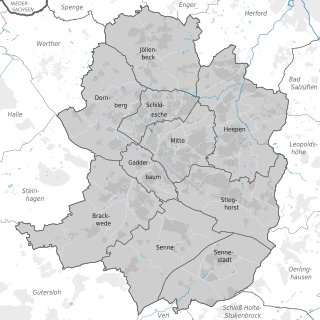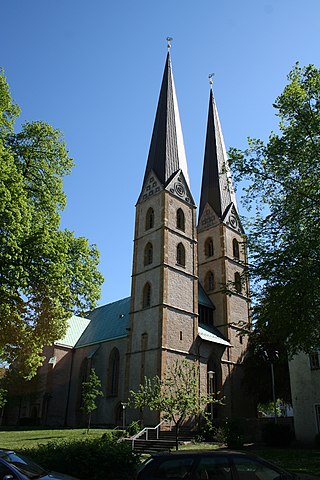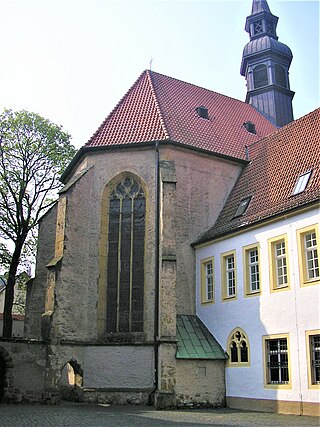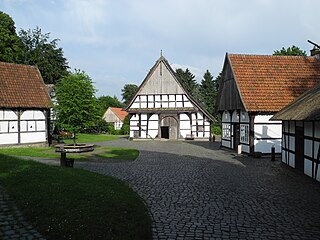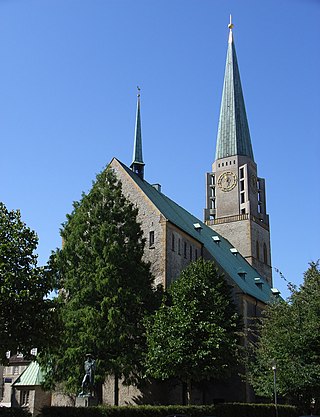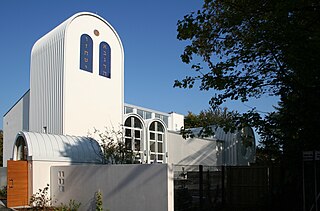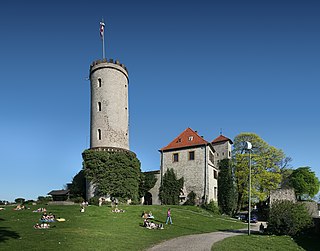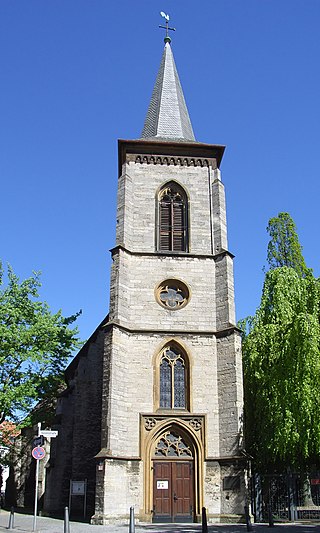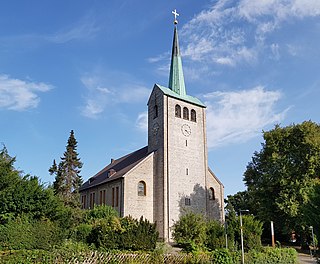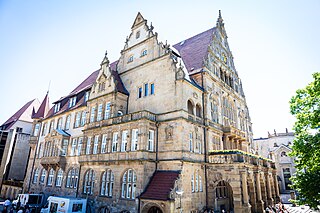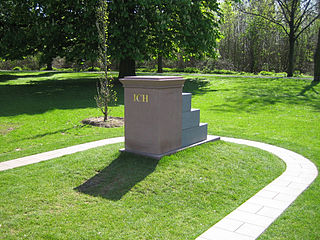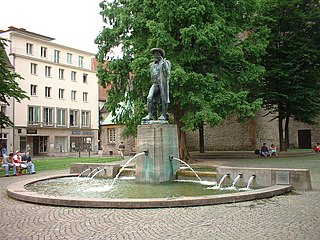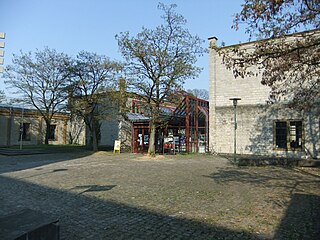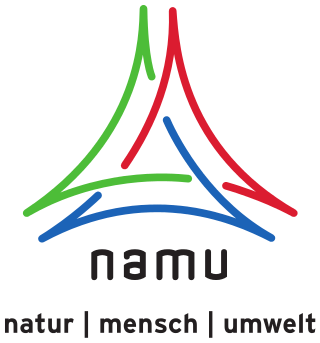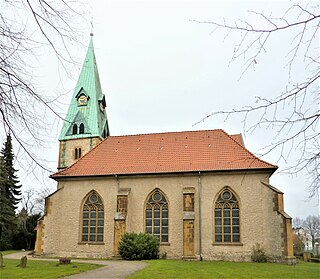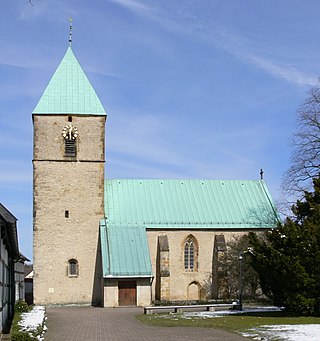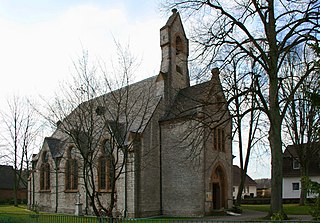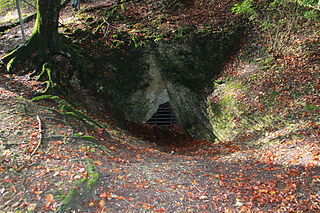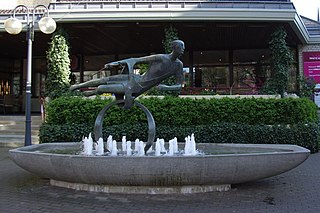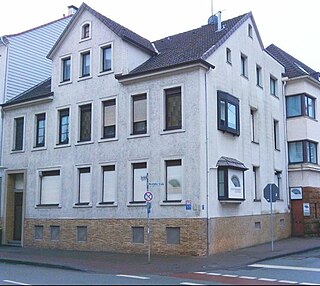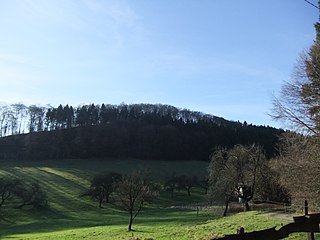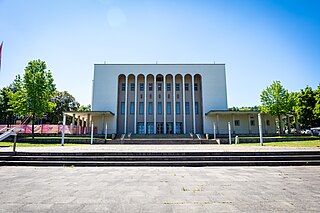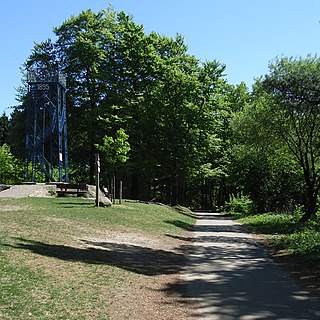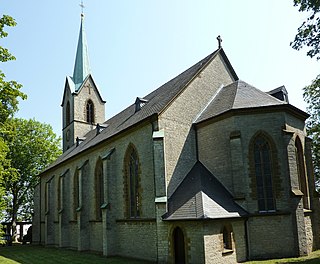29 Sights in Bielefeld, Germany (with Map and Images)
Legend
Welcome to your journey through the most beautiful sights in Bielefeld, Germany! Whether you want to discover the city's historical treasures or experience its modern highlights, you'll find everything your heart desires here. Be inspired by our selection and plan your unforgettable adventure in Bielefeld. Dive into the diversity of this fascinating city and discover everything it has to offer.
Sightseeing Tours in Bielefeld1. Stadtpalais Habichtshöhe
The list of monuments in Bielefeld contains the listed buildings in the area of the city of Bielefeld in North Rhine-Westphalia. These monuments are entered in the list of monuments of the city of Bielefeld; The basis for inclusion is the North Rhine-Westphalia Monument Protection Act.
2. Neustädter Marienkirche
The Evangelical Lutheran St. Mary's Church in Neustadt is the largest church in Bielefeld. The church, built in the Gothic style from 1293 onwards, is a defining element of Bielefeld's cityscape and is located in the Mitte district.
3. Pfarrkirche St.Jodokus
St. Jodokus is a Roman Catholic parish church and former Franciscan church in the centre of Bielefeld in the Mitte district. The late Gothic hall church with turret and the former convent buildings enclosing the cloister form an ensemble in Bielefeld's old town. The church and monastery building are plaster buildings with stone structure.
4. Bauernhausmuseum
Das Bauernhausmuseum Bielefeld ist ein Museum im Stadtbezirk Gadderbaum der ostwestfälischen Stadt Bielefeld im Bundesland Nordrhein-Westfalen. Das Museum liegt im Bielefelder Stadtwald und ist eines der ältesten Freilichtmuseen Westfalens.
5. Altstädter Nicolaikirche
The Old Town Nicolai Church is the oldest church in the original city of Bielefeld. It is the church of the Evangelical Lutheran Old Town St. Nicholas Parish. The church is named after Nicholas of Myra. It is located in the Mitte district.
6. Synagoge Beit Tikwa
The Jewish Community of Bielefeld is a religious community founded in Bielefeld in 1705, whose beginnings can be found in the 14th century. Today, as the Jewish Community of Bielefeld, it is a member of the State Association of Jewish Communities of Westphalia-Lippe. In addition, she has joined the Union of Progressive Jews in Germany.
7. Burg und Festung Sparrenberg
Sparrenberg Castle, also known as the Sparrenburg, is a restored fortress in the Bielefeld-Mitte district of Bielefeld, Germany. It is situated on the Sparrenberg hill in the Teutoburg Forest and towers 60 metres (200 ft) above the city centre. Its current appearance mainly originated in the 16th and 19th century. The Sparrenburg is considered to be Bielefeld's landmark.
8. Pauluskirche
St. Paul's Church in Bielefeld's Mitte district is an Evangelical Lutheran parish church. It is located in the northeastern city center on Paulusstraße and August-Bebel-Straße in the Mitte district.
9. Süsterkirche
The Süsterkirche of the former Augustinian convent of Mariental is today the parish church of the Protestant Reformed congregation in the East Westphalian city of Bielefeld. It is located in the northern old town on Süsterplatz of the same name and thus in the Mitte district.
10. Ruine Stiftskirche in Müdehorst
Müdehorst Abbey, also known as Müdehorst Abbey, was founded around 789 in what is now the Niederdornberg-Deppendorf district in the Bielefeld district of Dornberg. It was thus one of the oldest monastic institutions in Westphalia. It was soon abandoned in favor of Herford Abbey.
11. Marienkirche Jöllenbeck
St. Mary's Church Jöllenbeck is one of the three parish churches in the united Evangelical Lutheran Reconciliation Parish of Jöllenbeck in the Bielefeld district and district of Jöllenbeck. Today's "new" St. Mary's Church from 1854 replaces the medieval predecessor building, which was demolished in 1877. It is a listed building and has the status of a patronal church according to the old state church law.
12. Altes Rathaus
The Old Town Hall is the administrative headquarters built in 1904 in the East Westphalian city of Bielefeld in the Mitte district. The city's oldest town hall on the Alter Markt was originally rebuilt after war damage in the 1950s, rebuilt in a heavily modified way and now houses the Theater am Alten Markt.
13. Ich
A Ego-Monument is a sculpture that was erected for the first time in the city of Frankfurt am Main. The work of the artist Hans Traxler in collaboration with the stonemason Reiner Uhl has been on display since 24 March 2005 in the Oberrad district, in the Mainuferanlage between Rudererdorf and Gerbermühle in Frankfurt's green belt.
14. Leineweberdenkmal
With the Sparragenburg, the Leineweber monument is one of the most important landmarks of the city of Bielefeld. It is located east of the old town Nicolaikirche in the Altstädter Kirchpark. It was created in 1909 by the sculptor Hans Perathoner, who had headed the sculpture class at the Bielefeld craftsman and arts and crafts school since 1907. Like the county monument in Jöllenbeck, it was inaugurated on July 16, 1909 on the occasion of the 300th anniversary of the county of Ravensberg.
15. Adlerdenkmal
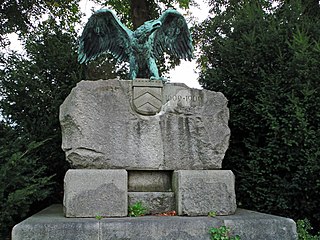
The County Monument, popularly known as the Eagle Monument, is a monument in the Bielefeld district of Jöllenbeck. It was unveiled on the afternoon of July 16, 1909 and was intended to commemorate the 300-year affiliation of the County of Ravensberg to Brandenburg-Prussia and the House of Hohenzollern. In the morning of the same day, the linen weaver monument had already been unveiled in Bielefeld. Even today, the county monument is considered a landmark of Jöllenbeck.
16. Historisches Museum
The Historical Museum of the City of Bielefeld shows the history of the city of Bielefeld and the East Westphalia-Lippe region with a focus on industrial history. It was opened in May 1994. The exhibition is housed in some halls of the former Ravensberg spinning mill, which immerses the visitor in the atmosphere of industrialization.
Wikipedia: Historisches Museum der Stadt Bielefeld (DE), Website
17. NaMu - Naturkunde-Museum
The Natural History Museum in Bielefeld is a natural history museum in the city of Bielefeld in North Rhine-Westphalia, Germany. Since 2003, it was given the additional name namu, which stands for the German words Natur (nature), Mensch (man), and Umwelt (environment). The exhibitions take place in the Spiegelshof, a historical building from the 14th century.
18. Johannisberg
The Johannisberg is a 200 m high part of the northern ridge of the Teutoburg Forest in Bielefeld. Together with the Sparrenberg opposite, which carries the Sparrenburg, it borders the northeast end of the Bielefeld Pass. The section of the ridge between Bielefeld Pass and the incision of the Johannesbach, which is barely over 4 km long, is not very structured. The 226 m high Ochsenberg with the Ochsenheide adjoins the Johannisberg, followed by the 209 m high Stecklenbrink.
19. Peter-und-Pauls-Kirche
St. Peter and Paul is the Evangelical Lutheran parish church in the Bielefeld district of Heepen in the Bielefeld church district of the Evangelical Church of Westphalia. It is the original parish church of today's city of Bielefeld.
20. Peterskirche Kirchdornberg
Today, St. Peter zu Kirchdornberg belongs to the Evangelical Lutheran parish in the Bielefeld district of Dornberg in the Bielefeld church district of the Evangelical Church of Westphalia. The church is the oldest sacred building in the present-day city of Bielefeld.
21. Kreuzkirche
The Kreuzkirche in the Bielefeld district of Sennestadt is an Evangelical Lutheran parish church. It is located in the immediate vicinity of the Sennestadthaus on the B68. The church is an architectural monument.
22. Zwergenhöhle
The Dwarf Cave is a karst cave located on the southern ridge of the Teutoburg Forest in the Bielefeld district of Senne. The natural monument is part of the nature reserve "Eastern Teutoburg Forest" and is the only natural cave in the city of Bielefeld.
23. Merkurbrunnen
The Merkurbrunnen fountain in Bielefeld is the work of Herbert Volwahsen. The 5.50 m long stone bowl was erected in 1963 in front of Bankhaus Lampe on the Alter Markt in Bielefeld as the final point of reconstruction after the Second World War. The fountain, designed in the style of the 1960s, soon became a landmark of the city. On a bronze semicircle, similar to a globe, the 2.70 m tall Mercury floats in a moving pose, holding his staff in his right hand. On the helmet and sandals, only briefly hinted at, the small wings are recognizable. The clouds over which the Greek god hovers are symbolized by small fountains of water.
24. Deutsches Fächermuseum
The German Fan Museum is a mouse museum specializing in subjects in Bielefeld in North Rhine-Westphalia. The corresponding foundation was launched in 1994 by Marie-Luise and Günter Barisch. The museum was opened in 1995. It is unique in Germany and one of only three museums of this kind worldwide. It is located in the old town of Bielefeld in the street Am Bach.
Wikipedia: Deutsches Fächer Museum – Barisch Stiftung (DE), Website
25. Auf dem Polle
Auf dem Polle is the name of a 320 m high mountain southeast of Bielefeld. It belongs to the main ridge of the Teutoburg Forest and lies south of Bielefeld-Lämershagen. It also forms the highest elevation in Bielefeld and in the Ravensberger Land cultural landscape. About 600 metres west of the mountain, the A 2 motorway crosses the Teutoburg Forest.
26. Rudolf-Oetker-Halle
The Rudolf-Oetker-Halle (ROH) is the concert hall of Bielefeld, North Rhine-Westphalia, Germany. It was built from 1928 to 1930 after designs by Düsseldorf architects Tietmann & Haake, opened on 31 October 1930. The listed monument is mostly in the original state and has excellent acoustics. The hall has been managed by the Theater Bielefeld from 2018. It is the home of the Bielefelder Philharmoniker.
27. Ebberg
The Ebberg is a 309.1 m high mountain in the southeast of Bielefeld. It belongs to the main ridge of the Teutoburg Forest, which forms the district boundary between the Bielefeld districts of Senne and Stieghorst. The Hermannsweg runs over the summit and on the summit stands the Bielefeld Bismarck Tower, called Iron Anton, which was built in 1895 and renovated in 2004; about 200 m further east a 21 m high radio tower of a British army; from there again about 300 m in an easterly direction a municipal pumping station.
28. Petrikirche
St. Peter's Church in Bielefeld-Mitte is an Evangelical Lutheran church in the Bielefeld church district. The building with church and parish hall at Petristraße 51 was built in 1954 according to plans by the architect Werner March.
29. Evangelische Kirche Ubbedissen
The Evangelical Church of Ubbedissen is a listed Evangelical Lutheran church in Ubbedissen, a district of Bielefeld, a city in the administrative district of Detmold in North Rhine-Westphalia. The parish of Ubbedissen-Lämershagen belongs to the Bielefeld church district of the Evangelical Church of Westphalia.
Share
How likely are you to recommend us?
Disclaimer Please be aware of your surroundings and do not enter private property. We are not liable for any damages that occur during the tours.
